
Ottavio Farnese reigned as Duke of Parma and Piacenza from 1547 until his death and Duke of Castro from 1545 to 1547 and from 1553 until his death.

The Duchy of Parmaand Piacenza, was an Italian state created in 1545 and located in northern Italy, in the current region of Emilia-Romagna.

Ranuccio I Farnese reigned as Duke of Parma, Piacenza and Castro from 1592. A firm believer in absolute monarchy, Ranuccio, in 1594, centralised the administration of Parma and Piacenza, thus rescinding the nobles' hitherto vast prerogative. He is best remembered for the "Great Justice" of 1612, which saw the executions of a large number of Piacentine nobles suspected of plotting against him. Claudia Colla his mistress and her mother were accused of using witchcraft to stop him from having offspring, and both were sentenced to death by burning. Because one of the conspirators, Gianfrancesco Sanvitale, falsely implicated several Italian princes, namely Vincenzo Gonzaga, Duke of Mantua and Cesare d'Este, Duke of Modena, in the plot, Vincenzo and Cesare's names appeared on the list of conspirators during formal court proceedings; as a result, Ranuccio's reputation among the rulers of Italy was irreparably damaged because it was evident that he gave credence to Gianfrancesco's obviously false confession. When, consequently, in the early 1620s, Ranuccio was looking for a bride for his younger legitimate son and heir, Odoardo, none of the Italian ruling families were forthcoming with princesses.

Ranuccio II Farnese was the sixth Duke of Parma and Piacenza from 1646 until his death nearly 50 years later and Duke of Castro from 1646 until 1649.

The House of Farnese was an influential family in Renaissance Italy. The titles of Duke of Parma and Piacenza and Duke of Castro were held by various members of the family.
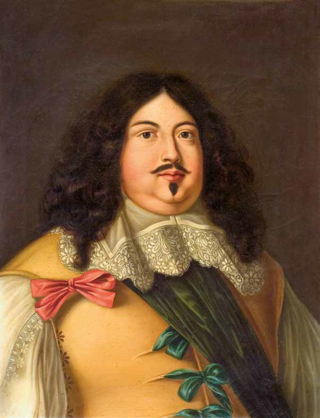
Odoardo Farnese, also known as Odoardo I Farnese to distinguish him from his grandson Odoardo II Farnese, was Duke of Parma, Piacenza and Castro from 1622 to 1646.
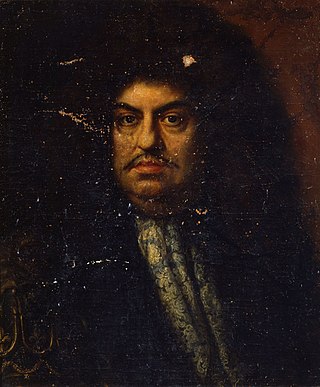
Alessandro Farnese was an Italian military leader, who was Governor of the Habsburg Netherlands from 1678 until 1682.
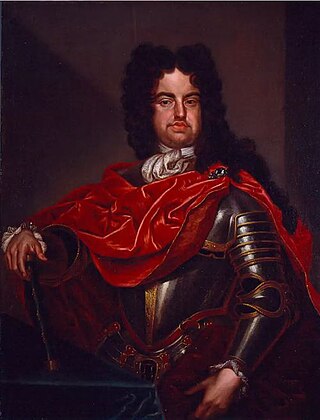
Francesco Farnese reigned as the seventh Farnese Duke of Parma and Piacenza from 1694 until his death. Married to Dorothea Sophia of the Palatinate, his brother Odoardo's widow, to avoid the return of her dowry, Francesco curtailed court expenditure, enormous under his father and predecessor, Ranuccio II, while preventing the occupation of his Duchy of Parma, nominally a Papal fief, during the War of the Spanish Succession.
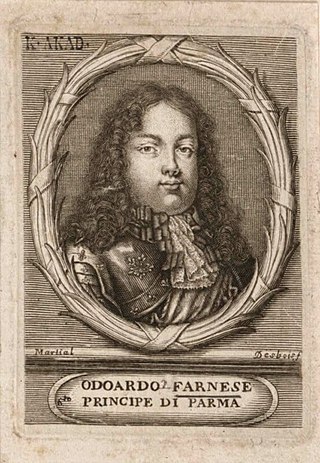
Odoardo Farnese was the eldest son of Duke Ranuccio II Farnese, Duke of Parma and Piacenza. Odoardo was the Hereditary Prince of Parma from his birth until his death. He was the father of the famously domineering Elisabeth, Queen of Spain.

Isabella d'Este was Duchess of Parma, and second wife of Duke Ranuccio II Farnese. She was the paternal grandmother of Elisabetta Farnese, Queen of Spain.

The House of Bourbon-Parma is a cadet branch of the Spanish royal family, whose members once ruled as King of Etruria and as Duke of Parma and Piacenza, Guastalla, and Lucca. The House descended from the French Capetian dynasty in male line. Its name of Bourbon-Parma comes from the main name (Bourbon) and the other (Parma) from the title of Duke of Parma. The title was held by the Spanish Bourbons, as the founder Philip, Duke of Parma was the great-grandson of Ranuccio II Farnese, Duke of Parma. The House of Bourbon-Parma is today the Sovereign House of the Grand Duchy of Luxembourg (agnatically) and all members of the Grand Ducal Family of Luxembourg are members of the House of Bourbon-Parma with the title of "Princes/Princesses" and the predicate of Royal Highness.

Margherita de' Medici was Duchess of Parma and Piacenza by her marriage to Odoardo Farnese, Duke of Parma. Margherita was regent of Piacenza in 1635, and regent of the entire duchy from 1646 until 1648 during the minority of her son.

Margaret Yolande of Savoy was Princess of Savoy from birth and later Duchess consort of Parma. A proposed bride for her first cousin Louis XIV of France, she later married Ranuccio Farnese, son of the late Odoardo Farnese and Margherita de' Medici. She died in childbirth in 1663.
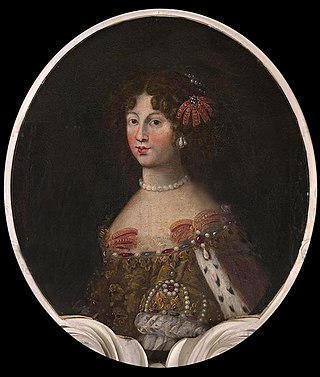
Maria d'Este was a Modenese princess and Duchess of Parma as the wife of Ranuccio II Farnese, Duke of Parma. She was a daughter of Francesco I d'Este, Duke of Modena and Maria Caterina Farnese.

Princess Enrichetta d'Este was a Duchess of Parma by marriage to her cousin Antonio Farnese, Duke of Parma. She was the Regent of Parma in 1731 during her alleged pregnancy in the interregnum after her husband's death.
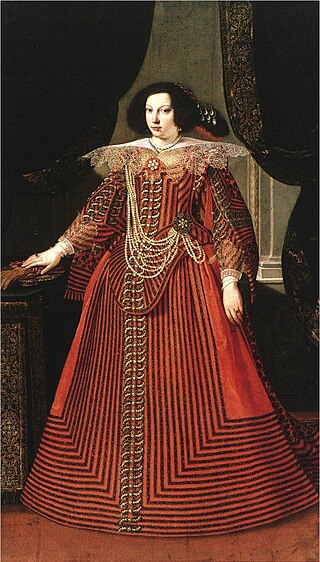
Maria Caterina Farnese was a member of the Ducal House of Farnese. She was Duchess of Modena as the first wife of Francesco I d'Este, Duke of Modena. In some sources she is known simply as Maria Farnese.
Margherita Maria Farnese was an Italian noblewoman born into the House of Farnese. She was the Duchess of Modena and Reggio by marriage to her first cousin Francesco II d'Este, Duke of Modena. Her niece was Elisabeth Farnese, wife of Philip V of Spain.

Francesco Maria Farnese was an Italian Roman Catholic cardinal.

Margherita Farnese, was an Italian noblewoman member of the House of Farnese and by marriage Hereditary Princess of Mantua between 1581–1583.

Margherita Aldobrandini, was an Italian noblewoman member of the Aldobrandini family and by marriage Duchess consort of Parma and Piacenza during 1600–1622. She was also Regent of both Duchies during 1626–1628 on behalf of her minor son.





















